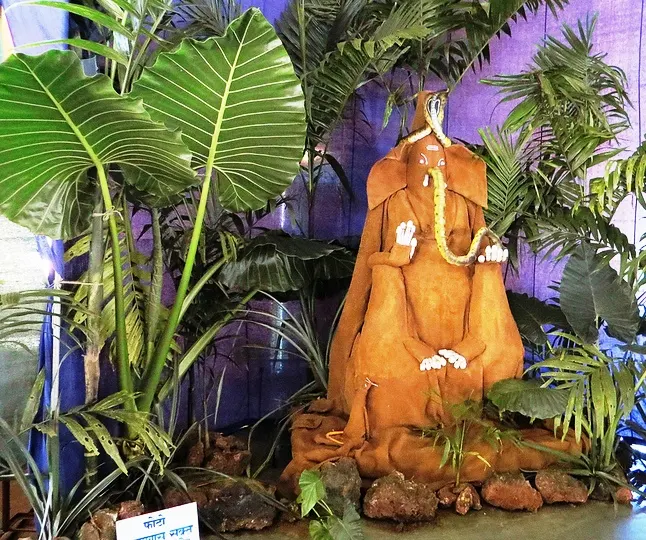If on the other hand, the puddles made the path complicated, the children had become a greater threat. Apparently, during this festival, the children enjoy lighting firecrackers and throw them near the passersby. So the only option is to wait until they explode or to accelerate as much as you can to avoid them.
Part of me cursed them but then I remembered that when I was a kid I used to throw water balloons during Holi from the roofs of my friends' houses. I understood that it's all part of the childhood and take my curses back.
Driving to the place all I could think about was that perhaps the celebration won't be as grand and elaborate as Mumbai. But suddenly I heard the majestic sound of the drums that took away the idea away from my head. When the road finally ended on the beach and the sound of the drums had become more and more intense I knew it was time to park the bike.
I looked for a small place to do it and when I put my foot out of it I felt it sinking completely into the mud. My foot had disappeared and the mud reached me above my ankle. I did not give much importance since all I wanted to do was to get to see the show. The noise and the energy of the drums called me. I wanted to be there as soon as possible.
I moved my foot carefully to avoid breaking my soles and headed for the place. The rest of the way was absolutely the same, that was a small swamp created by the rains. The first image I see upon arrival is a cargo van full of Ganesh statues of all sizes and colors. Many people around them were praying. I took a couple of photos and headed to where the drums were.
It was a small area of the beach. Authorities had placed lights to illuminate the area and a circle had formed. The circle was delimited by men with drums and within this person danced rhythmically to the roar of the drum. They were only men. Women watched from the outside. In the distance, a few meters from the area of the drums I could see fireworks of different colors, and my curiosity forced me to go.
Before arriving at the place where the fireworks came I met a crowd of people. They were all gathered there and they had formed two lines with a corridor between them. On one side were all the statues of Ganesh on a small altar. Behind them was the family that had brought them. On the other side, there were only spectators. At the beginning of these ranks, several children began to pass, stopping in each of the idols to take some petals from the collars of flowers that enveloped Ganesha.
There were easily over 100 statues of different sizes all placed in a straight line on the shore of the beach. They were illuminated in different ways, mostly with candles. Many families had mounted a more complicated light system and in others, only one child held a small lamp.
Some of the people who passed beside brought containers with food and deposited a small offering to one side of Ganesh, mainly coconut or fruits. When they had finished making the trip and they had enough food they began to distribute it in the hands of the assistants to eat it. I went through each statue and could find each with different colors and adornments.

After an hour or two in this ceremony of offerings and prayers began the roar. I did not know exactly what happened until I saw it. People were taking the statues and carrying them into the water. These clay statues after the celebration are taken to the water to leave them there.
Among the chants of Ganpati Bappa Morya, there was also the crying of some children who did not want to separate from the statues of Ganesh. The mother would comfort and separate the child while the father took the statue to the water.
According to custom, each year after the celebration people must buy another statue of Ganesh. This one must be of the same or greater size than the one of the previous year. It cannot be smaller. For this reason, some states are so large that it takes several people to load them up to the sea and put them in a fairly deep zone. And as always, my curiosity is such that I decided to follow the people in the water to observe this closely.
After a few minutes of immersing the statues into the water, the men return to the beach to pick up the table where the statue of Ganesh was kept and retire home. In less than 15 minutes, the beach got deserted, as if nothing had happened. I also went back to look for my motorcycle again, hoping that it had not been absorbed by the mud.
Returning to the hostel, I wanted to take a bath to remove the mud, sea water and anything else I could have been covered with. During my return, I just reflected on the diversity of customs in India, how different each one is and how lucky I was to live this festival.
India is a country of mixes, there are so many religions, customs and languages within the country that are intertwined one in the other in such a way that it looks like one, but it is not. Each region, city, and town has its own rituals and ideologies that coexist harmoniously. They say that every 100 km the language and customs changes. I certainly believe it.
India will teach you many things but what we should learn from this great country is tolerance in diversity and an example of how to live in peace amid the contrasts.


